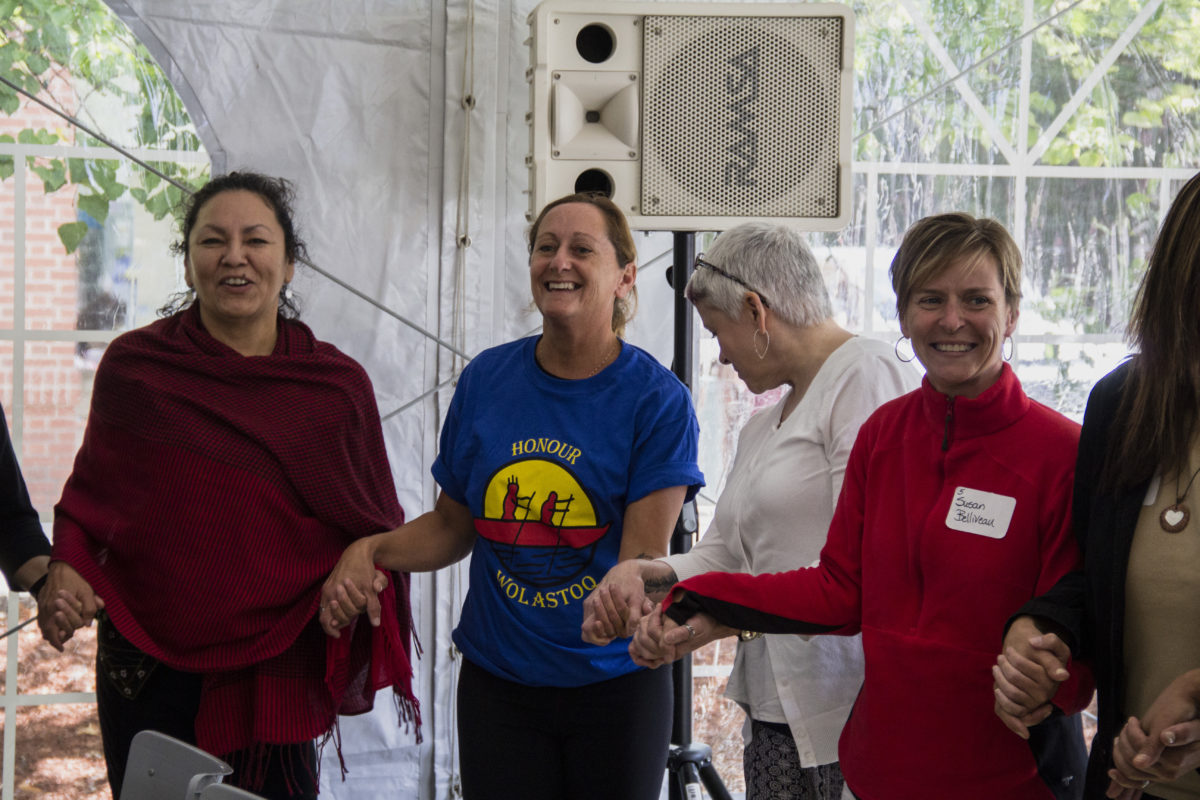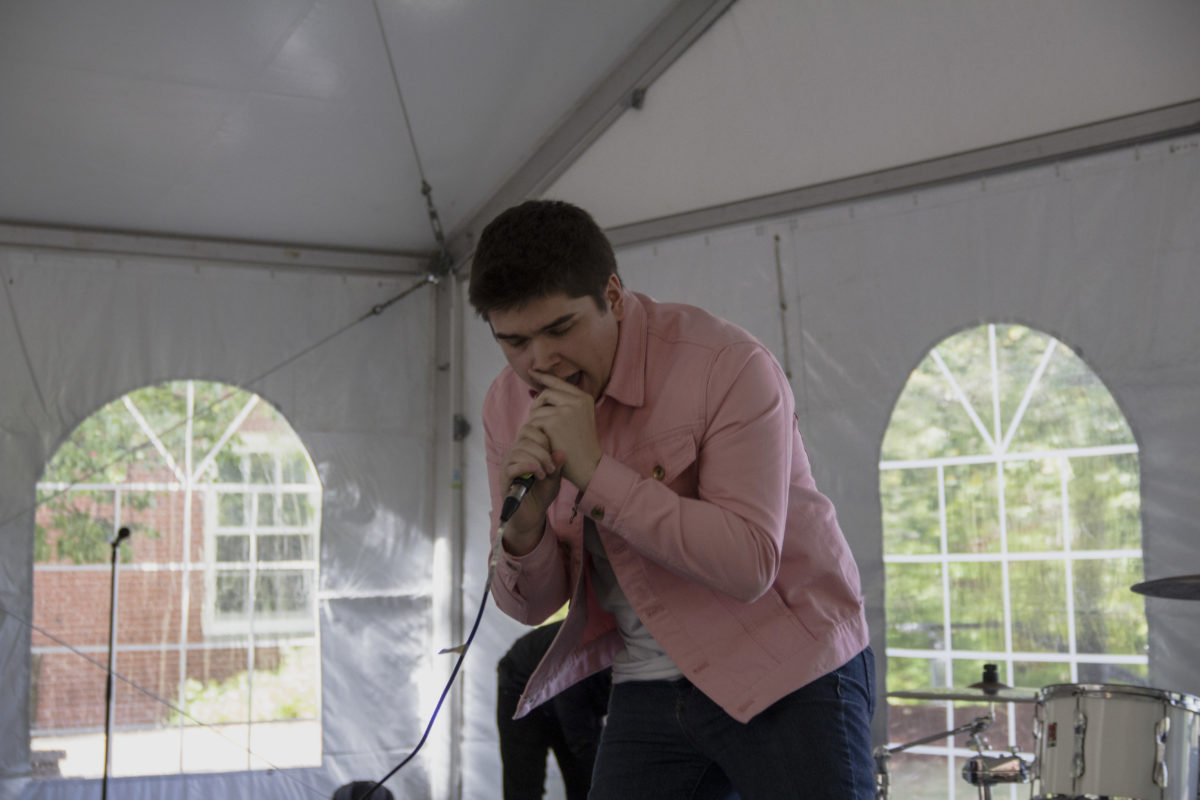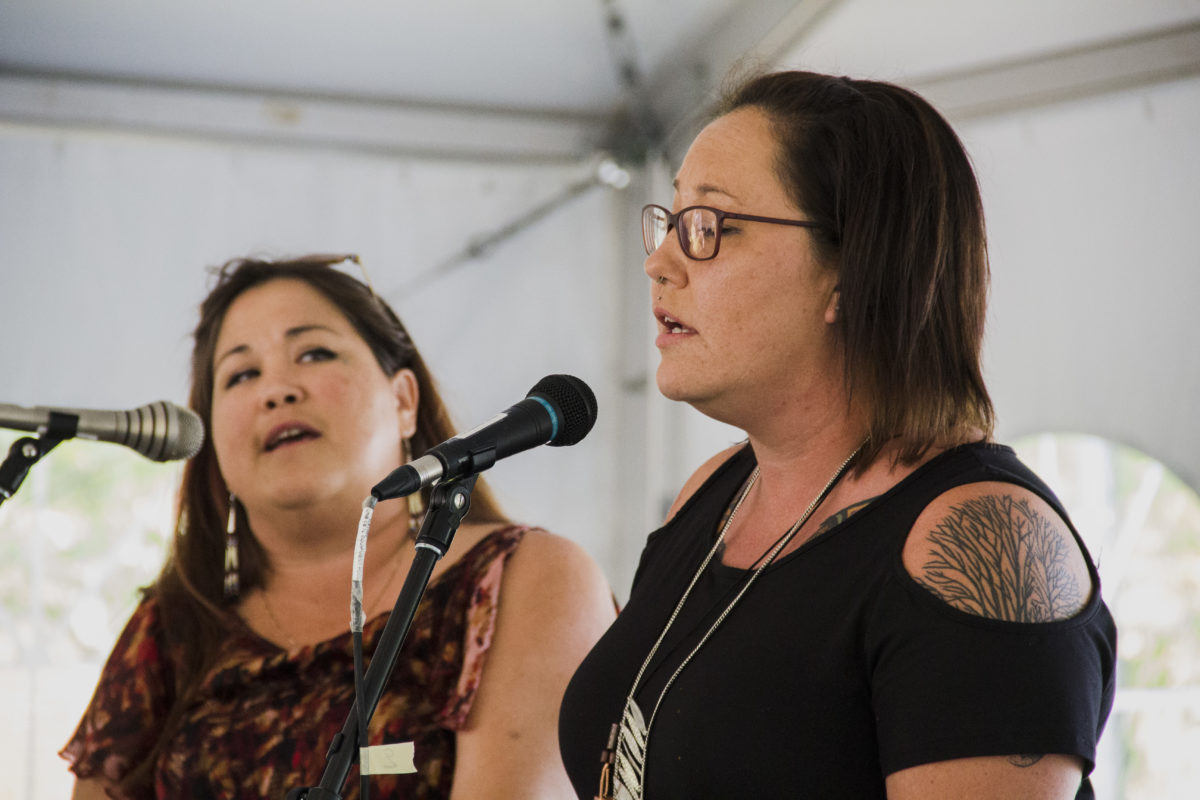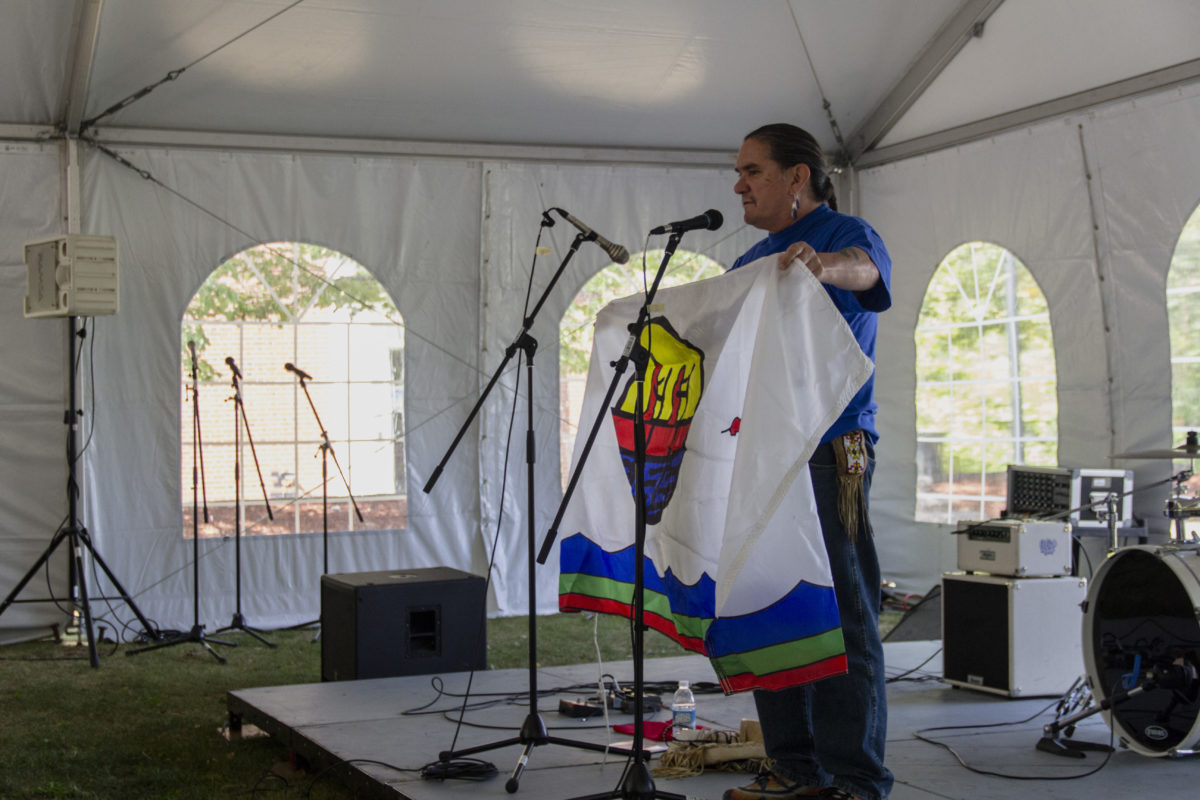St. Thomas University hosted its first-ever conference towards reconciliation Sept. 27 to 29.
The conference was part of a series of events planned for this year to address how STU can participate in meeting the demands of the Truth and Reconciliation Commission of Canada.
Becoming allies
The conference began last Wednesday afternoon with an address from university president Dawn Russell.

Russell acknowledged the university’s administration has much to do in terms of reconciliation. She said “Indigenization of the academy” means reconciliation through education, dialogue and collective action.
St. Thomas University has 166 Indigenous students, accounting for eight per cent of its overall student population. Four per cent of its faculty identifies as Indigenous. Russell said both of these numbers are well above the national average, emphasizing the importance of reconciliation for the STU community.
“It won’t be easy,” Russell said, but added STU intends to “win the battle,” and use liberal art skills to “beat this challenge.”
The conference’s first keynote speaker, Eddy Robinson, took the stage after an opening prayer by STU’s elder-in-residence Miigam’agan.
Robinson is an educator, writer and Indigenous artist from Toronto. He spoke to the crowd about Indigenous ways of knowing, which are centered around respect, reciprocity, relevance and responsibility, and how non-Indigenous communities can become Indigenous allies.
“We’ve been asking for this stuff for a long time, so there’s a call to action, not just recommendations … And they’re saying, ‘We want to do this together,’ because guess what? We can’t do this on our own,” Robinson said.
“And if we resist each other the whole time, we’re not going get along. It’s going to keep dragging out. So, we need to figure out a way that we can communicate with each other as human beings.”
Robinson’s own advocacy has been driven by his family’s history. His father was a student at Chapleau Indian Residential School and Shingwauk Indian Residential School, taken from his family when he was only 18-months-old. He was tied up in a chicken coop, starved in a high chair and later kept in a hole under the staircase — a spot that still exists at what is now Algoma University in Sault Ste. Marie, O.N.


Robinson said his father’s experience is part of the reason he’s been involved in bringing action to the surface the last 25 years, including rallies and speaking to residential school survivors.
“I was there for him,” he said.
Robinson said allyship hasn’t really been defined, which is why people of both Indigenous and non-Indigenous communities have trouble approaching it.
Robinson said it will take acknowledging personal privilege, asking questions and experiencing authentic Indigenous culture to build bridges.
“We talk about gap in education, [but] it’s a gap in the relationship. We’ve separated ourselves,” he said.
“So, we have to figure out a way to reconnect because we have a lot of the same methodologies, we just have a different lens.”
Though reconciliation has been a decade-long process already just within the federal government, Robinson said the journey isn’t supposed to be simple.
Elders often tell their communities to embrace failures along the way and encourage people to make mistakes, he said, because building necessary connections takes work.
“When you’re thinking about allyship, thinking about how you can contribute to the conversation with other Indigenous people and, as Indigenous people, how you can contribute to the academic writing in terms of defining what that might mean … It’s about relationships,” Robinson said.
“We need to think about how we can do this together. We need to be friends.”
To do that, Robinson said it takes more than just reading articles and asking a few questions.
“Call somebody in the community, maybe spend some time there. Other than a meeting, go for a couple days, maybe go to one of their celebrations … not one of the celebrations you’re putting on for them, and just be a part of it,” he said.


“If you’re going to be an ally, it’s [about] understanding these things.”
Gilbert Sewell, elder-in-residence at Mount Allison University, said reconciliation, in his language, means asking for forgiveness. Coming together is a necessary first step for STU, he said.
“It’s about time we start working together,” Sewell said.
“We should take time to learn about one another.”
‘Etuaptmumk’: Two-eyed seeing
Thursday morning, the second day of the conference, saw Halifax’s poet laureate Rebecca Thomas highlight the importance of understanding different perspectives while working towards reconciliation.
Thomas, who is also coordinator of Aboriginal student services for Nova Scotia Community College, began her talk with a creation story, a poem and a lot of historical background.
She said accurate context is necessary for understanding Indigenous perspectives to use “strength from both worlds” and use them simultaneously.
“Education is the key to reconciliation,” she said.


In the path to reconciliation, Thomas said understanding the systematic racism and the self-determination denied to many Indigenous people is also key. From the political denomination of status cards to the Indian Act, they “have always been told who they are,” she said.
For Thomas, reconciliation is no longer having a card proving her status as native.
Thomas’ father was sent to the Shubenacadie Indian Residential School as a boy. Decades later, he got a cheque from Common Experience Payment, a government program providing lump-sum pay to survivors of residential schools — “more than 12,000 but less than 20,000,” Thomas said, based on a calculated algorithm.
It took him almost a year to cash the check, she said, because no amount of money can be full compensation for loss of language, culture and community. Compensation, she said, is not just monetary.
Following panel discussions, Robert Burroughs of the New Brunswick Student Alliance asked how a non-Indigenous organization can help facilitate reconciliation.
Thomas said the most important thing is to create buy-in and empathy, and understand why it’s necessary.
Academic decolonization
Marie Battiste, a professor at the University of Saskatchewan, said she fulfilled her mother’s wish by going into education.
But her academic journey has done much more by giving her a first-hand perspective on the challenges facing post-secondary institutions in “decolonizing their curriculums.”
Battiste, who is Mi’kmaw, grew up in Houlton, Maine after her family moved from Potlotek First Nation in Nova Scotia.
She said one obstacle is the focus put on Eurocentric viewpoints and resources in university culture, isolating native studies faculty from the rest.
“Aboriginal language and knowledge are viewed as having no contemporary significance and value for education,” she said.


Battiste also condemned the lack of Indigenous-created texts for learning materials. When she began preparing to teach her first native studies course, she said all the textbooks used within the program were written by non-Indigenous authors.
So, she crafted her own.
The hashtag #nothingaboutuswithoutus, is Battiste’s motto for her work and activism.
Nastasha Simon is the project manager of the Elsipogtog First Nation education program and was a panel member on Friday. She said the lack of an Indigenous scholarly foundation is an obstacle to providing answers of reconciliation.
This can be partly attributed to disruptions in knowledge being passed on to younger generations from elders, she said.
St. Thomas English professor Kathleen McConnell was also on the panel. She recommended scheduling of courses to make time and space for the experiential learning style of elder’s wisdom, more language learning courses and bursaries to support students who are single parents.
“Language is the model for how we think,” McConnell said.
In university life, we tend to “think in Eurocentric languages that are all structured the same.”
Professor emeritus Andrea Bear Nicholas called for the revitalization of language. She said it’s the most important thing for reconciliation and decolonization.
However, she said it must be done within local Indigenous communities first, not on campus. Many Indigenous languages across Canada are rapidly diminishing as a result of aggressive assimilation policies dating back to colonization.
Bear Nicholas called on STU to revitalize its native studies program, recommending each student be required to take at least one native studies course.
She said “the pressure to Indigenize will invite the creation of quickly-cobbled together histories.”
If university professors are not guided in developing new curriculums, Bear Nicholas said she “fear[s] what will be [inaccurately] passed off as Indigenous in the future.”

